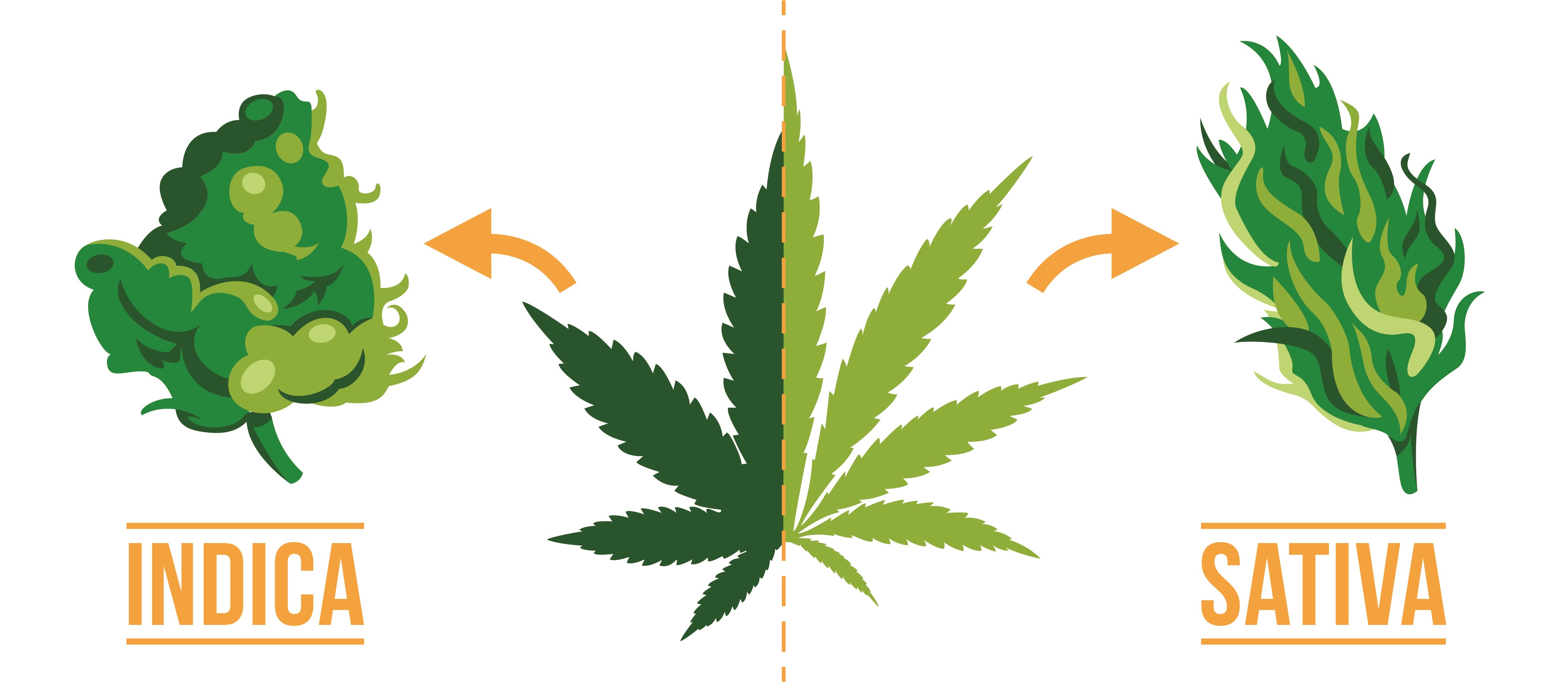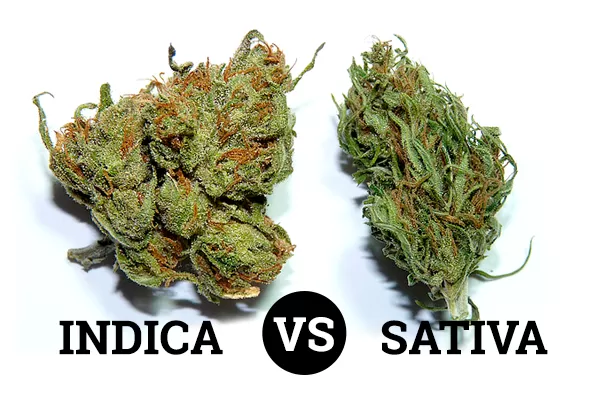There is a difference between indica and sativa cannabis, and it is a difference that involves several aspects of the plant, aspects related to geographical origin, flowering time, and the positive effects that these different varieties of cannabis give their users.
The history of cannabis is quite complex: some scientists have found traces of cannabis in mummies found in Peru in 1500 A.D., while in America the plant arrived after Columbus, and in Europe, again around 1500, it was introduced by some nomadic tribes from central Asia, and arrived in Africa in 1700 A.D. through Arab traders.
When cannabis was identified in 1750 by Charles Linnaeus, a Swedish botanist, he believed that only one monotypic genus existed in nature, and named it Cannabis sativa L., but in 1785 came the discovery of another variant of cannabis, namely cannabis indica, identified and named by the French botanist Jean-Baptiste Lamarck.
The Origins of Indica and Sativa

The origins of indica and sativa strains are different, as the two varieties of cannabis originated in different tropical regions.
Sativa cannabis originated in the rainforests of very hot and humid areas, such as Thailand, Cambodia, Central America, Colombia, Mexico and Brazil; then between the 60s and 70s it is said (without any certainty) that some indigenous varieties of cannabis sativa from Hawaii were processed in California by the so-called Haze Brothers and The Skunkman, who then brought it to Europe, after experimenting with some crosses from which the Haze genetics were born.
The origins of indica cannabis are in Afghanistan, Pakistan, India and other very hot and humid Middle Eastern areas; the name indica comes from the name India: it was here that the first indica varieties were found by westerners.
As mentioned above, the differences between the two cannabis plants, sativa and indica, relate not only to their origins, but also to their growth characteristics and the effects that the plants trigger in the consumer.
It is, however, well known that both indica, sativa and hybrid strains have beneficial physical and psychological properties, so much so that in the past, in the tropical areas where cannabis originated and was discovered, it was considered a valuable source of inspiration for one's spirituality.
Differences between indica and sativa
The differences between indica and sativa are manifold and relate to climatic factors and environmental conditions, morphological and flowering factors, and consequential factors that cause psychophysical problems in consumers.
Cannabis sativa plants are the morphologically largest varieties of cannabis, with long, narrow leaves, grow in locations 30 degrees north and 30 degrees south of the equator and have longer flowering times than indica varieties.
The structure of a sativa is similar to that of small, vertically growing trees with more slender forms than indica cannabis; a sativa also has very wide internodal spaces and leaves that have thin, elongated fingers.
The flowering period of a sativa can last up to 10 weeks, this cannabis strain requires a lot of light and warm temperatures, as well as a lot of space; furthermore, the thin sativa leaves cause the plant to become fragile as they have less chlorophyll than those of indica cannabis.
Indica varieties originate in subtropical countries and grow at temperatures between 30 and 50 degrees north and south of the equator. They have a short, robust structure, the leaves are very broad and their fingers grow quite wide, thus catching a lot of sunlight.
Cannabis indica plants have a much faster flowering period than sativas, making them an ideal plant for growers with limited time and space; the flowering period for indica is approximately 7-10 weeks.
The effects of indica and sativa
The effects of indica and sativa are different, but despite the fact that both indica and sativa varieties of light cannabis have lower percentages of THC and CBD, these plants provide the consumer with beneficial psychophysical effects.
Let's see what the effects of cannabis sativa are:
- Increasing psychophysical energy;
- Counteracts depression;
- Increased creativity;
- Reduction of nausea and stimulation of appetite;
- General sense of well-being;
The effects of cannabis indica include:
- Muscle and body relaxation;
- Help with sleep;
- Reduction of stress and anxiety;
- Increased dopamine production;
- Increased appetite;
- Reduction of pain and inflammation;
The effects of indicas and sativas are highly valued for their positive effects on humans: the effect of indicas is called 'stone' because it mainly affects the body, since it accentuates taste, touch and hearing.
While sativas are known for an effect called 'high' because it particularly affects the brain, accentuating energy, creativity and euphoria, but on a psychophysical level, it can be said that sativas are less influential than indicas and also have less incentive to drowsiness.
Indica or Sativa marijuana, what type are you?
Deciding whether to consume indica or sativa marijuana depends very much on your personal needs: our weed shop is full of varieties of Sativa L cannabis, the only one that can be legally grown in Europe and is available in just a few days.
If you need to relax, it is advisable to use indica cannabis because it is much more powerful on a physical level, while if you need a strong energy to stimulate activism and creativity, sativa cannabis is undoubtedly the plant that can help you cope better with complex or adrenalin-fuelled situations and where a spirit of enterprise is needed.
Ruderalis cannabis
Ruderalis cannabis is a relatively new strain in the cannabis cultivation scene. It grows in the wilds of the world's coldest regions, generally above 50 degrees north of the equator (in places like Russia and China).
The main feature of the Ruderalis family is that it is auto-flowering, meaning the grower does not have to get involved and can let his marijuana plant grow on its own. Ruderalis varieties are also very small and fast-growing. They produce very small leaves and only a few side branches.
 Italiano
Italiano Español
Español English
English Français
Français Deutsch
Deutsch
